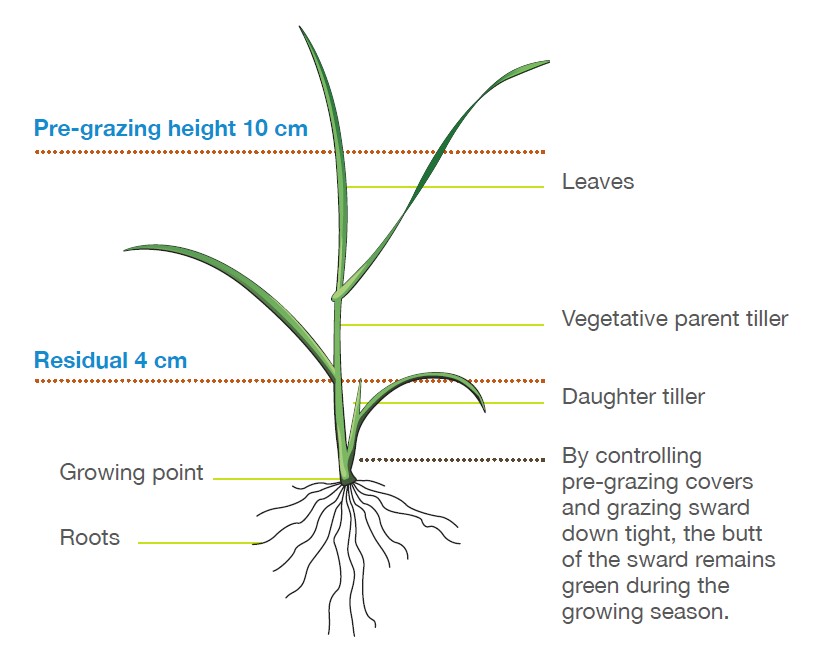- Home
- Knowledge library
- Grassland management: tips for first season
Grassland management: tips for first season
A newly sown sward takes about 11 months to fully establish. See our tips on encouraging tiller development and grazing management.
Back to: Managing grassland reseeds
Monitor the reseed
It is important to monitor new reseeds so any problems can be resolved quickly.
A newly sown sward takes about 11 months to fully establish. During this time, it is important that the sward is encouraged to tiller as much as possible and is protected from any damage.
Tiller development
Once a plant has germinated and the third or fourth leaf appears on the main tiller, daughter tillers will start to appear.
These will eventually form leaves and roots and will allow the plant to spread and the sward to thicken.
An established perennial ryegrass sward typically contains 5,000–7,000 tillers/ m2. This helps to create a dense sward, minimising soil damage and reducing space available for weed infestation.
Diagram of a tiller

Sward management
The tillering process in new swards is strongly aided by grazing. Grazing removes the existing leaf and encourages a new generation of tillers to emerge at the base of the sward.
Under continuous stocking regimes, a stable population of small tillers develops. Although rotational grazing encourages a slightly lower tiller population, individual tiller size and growth rate are greater. Avoid cutting silage swards in the first six months because it does not encourage the sward to tiller.
Graze the new reseed as soon as it is not possible to pull the plants out of the ground by hand. This is usually at the two-leaf stage or when the grass has produced about 2,200–2,500 kg DM/ha. Use sheep or youngstock for the first grazing to minimise any potential soil compaction, particularly in wet conditions.
Aim to graze autumn reseeds before the first winter to encourage tillering. Teagasc work suggests grazing at about 6–8 cm in the autumn but making sure it is grazed tight (4 cm) before the winter. The challenge is to do this without overgrazing or poaching, and the lightest class of stock available should be used. Do not apply excessive slurry.
Useful links
Topics:
Sectors:
Tags:

